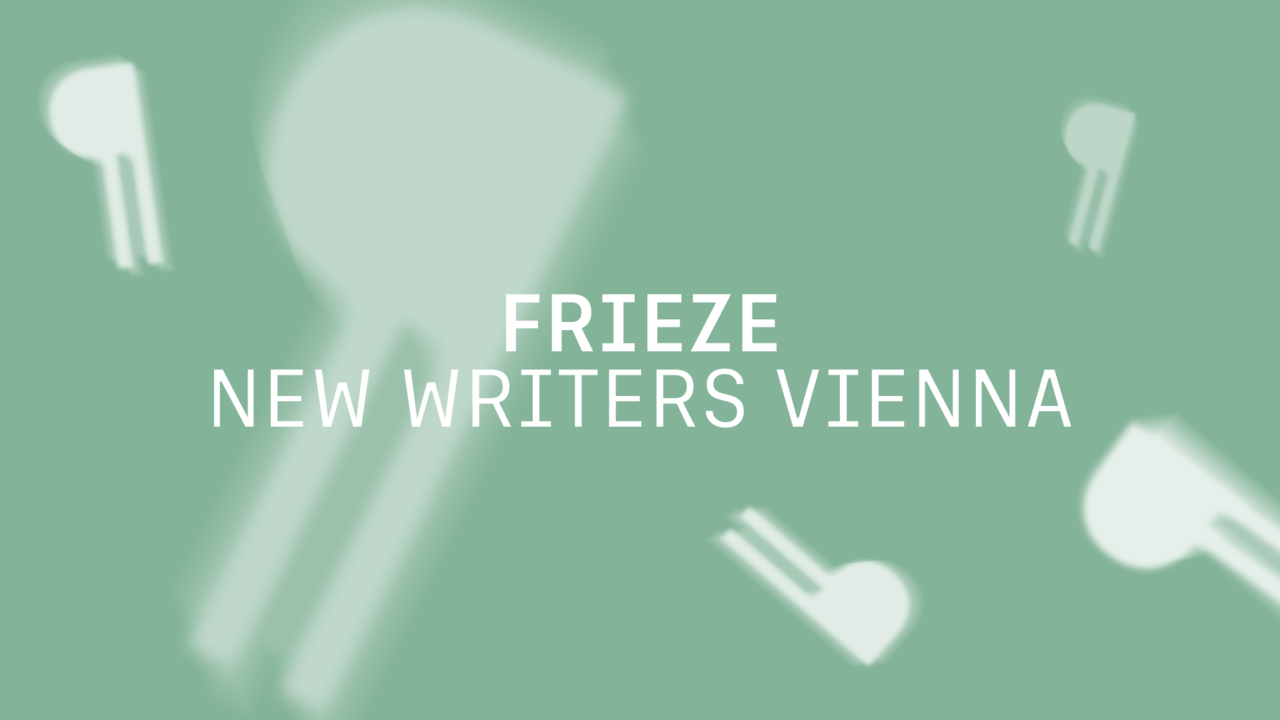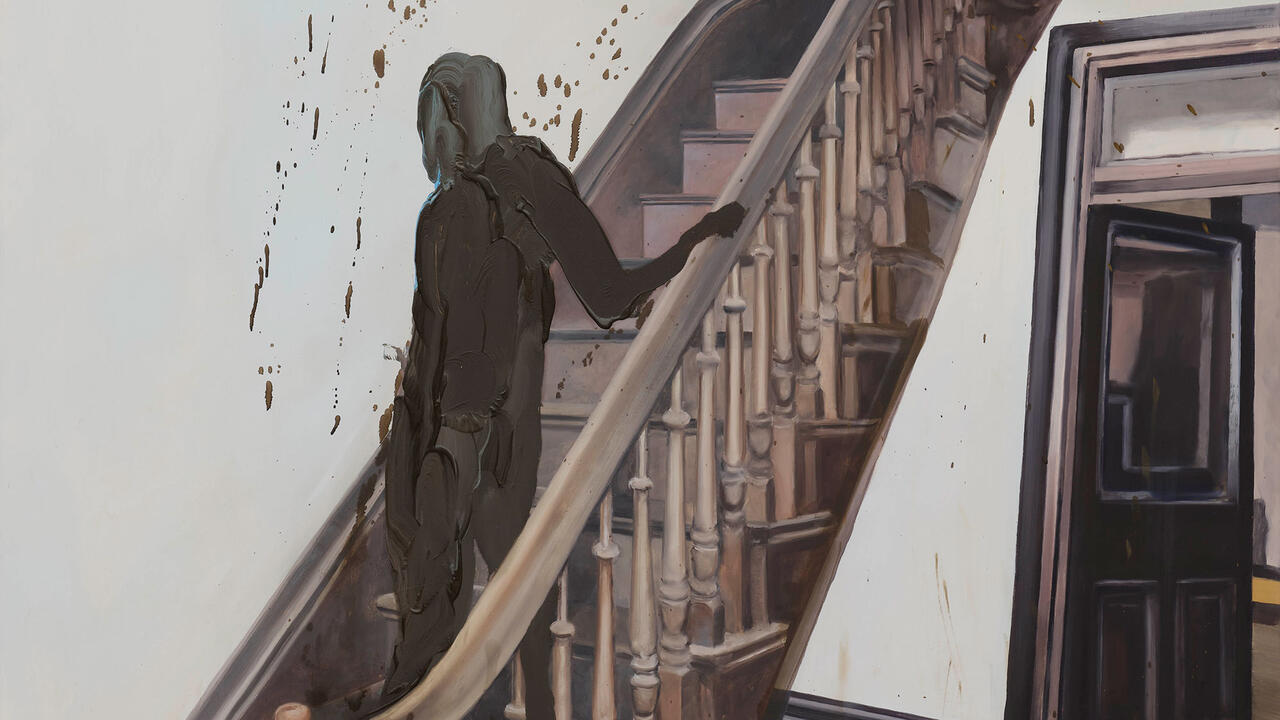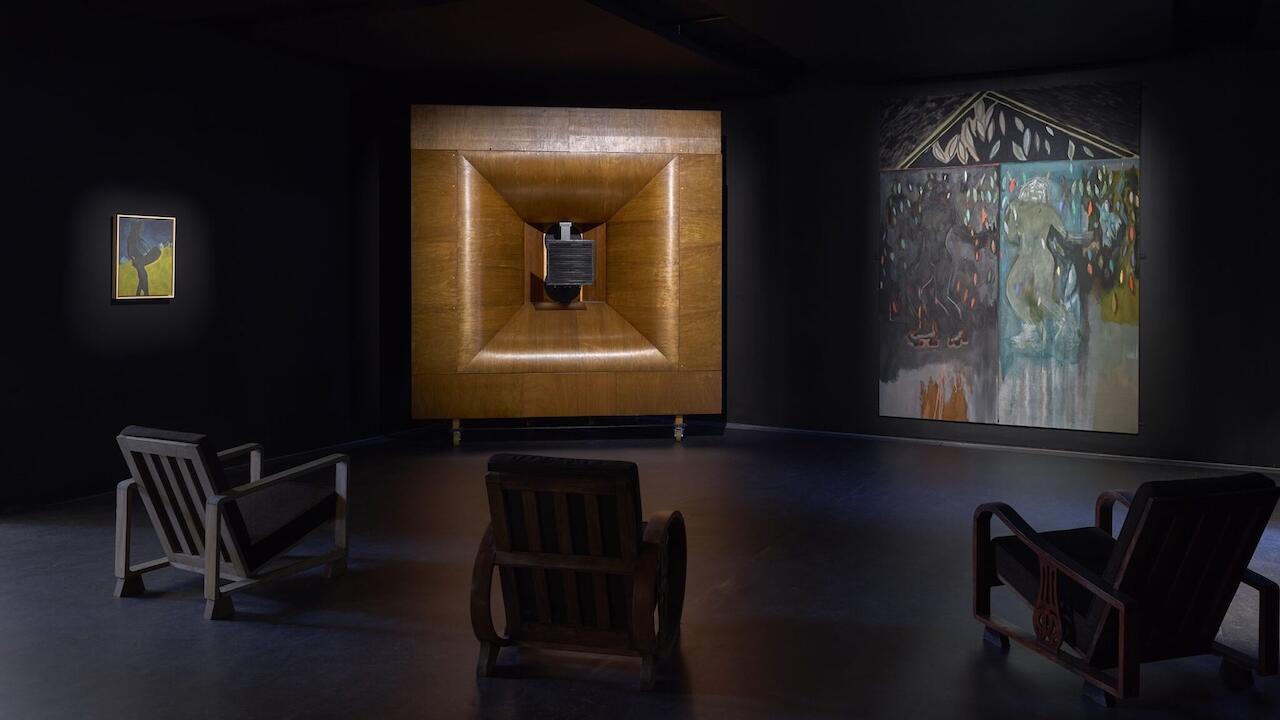Critic’s Guide to the Best Shows in Lisbon
From Sol Calero’s playful clichés of Latin America to an homage to British modernist architect Alison Smithson
From Sol Calero’s playful clichés of Latin America to an homage to British modernist architect Alison Smithson


Mariele Neudecker, ‘Echo Chamber’
Pedro Cera
Referencing the moody atmospheres of 19th century German romantic painter Caspar David Friedrich, who sublimed his landscapes with the spirit of God, Mariele Neudecker exalts slices of the natural world through mise en scène. In her installations, videos and photography God’s presence, however, may have been replaced by that of technology and scientific observation. The earliest work on show from 2000, Another Day (Simultaneous Record of the Sun Rising and Setting in Two Opposite Locations On The Globe – South East Australia and West Azores), is a two-channel video of a sunrise and a sunset that creates a wonderful postcard-like ecliptic anomaly, rich in twilight colours. In the back room of the gallery Neudecker has erected three fibreglass tree trunks, Faintly Falling Upon All the Living and the Dead (2009), as well as a small 3D tank piece, The Touch of Earthly Years (2018), that mystically captures a section of a forest. Neudecker made trips to Greenland in 2012 and 2015, where she saw glaciers in real life for the first time and here a human-size fibreglass example, There is Always Something More Important (2012) reminds the viewer of her journey to these natural wonders. While flirting with clichéd images, Neudecker’s pieces also carry a certain scientific detachment that takes large portions of the romantic out of the sublime but also helps us consider nature for the impact humans have on it.

Mariana Caló & Francisco Queimadela, ‘Alfabeto Analfabeto’
Monitor
Porto-based artists Mariana Caló and Francisco Queimadela have been working together since 2010, often on research-based projects. In their site-specific installation at Monitor, Alfabeto Analfabeto (2018), we are greeted by several gouache and acrylic paintings similar in content. The canvases backgrounds are coloured blue, green, and black and the subject matter resembles an assemblage of knuckle bones. In the gallery’s small basement space, they have painted an immersive all-green environment, with protuberant plaster horns sticking out from the ground, and have included more of the knucklebones-type paintings, and a video. The video appears like a spread from a catalogue: on the left side of the screen you see a Chinese death mask, from the collection of the International Art Center José de Guimarães's (CIAJG), where the artists have been in residence, and on the right side, stones mimicking the mask components. As a hand moves each stone, one by one, the shape of the mask mirrors the changes on the left, all invisibly but painstakingly made in stop-motion. In this show Caló and Queimadela seem to be plunging deep inside the CIAJG’s collection – a trend started by artist José de Guimarães in 1967 – looking for its smallest particles, in what seems like an attempt to interact and decipher its mysterious history.

Luís Lázaro Matos, ‘Tomber dans le Lac’
Galeria Madragoa
Luís Lázaro Matos’s solo show at Madragoa presents paintings, drawings and a short film in a phantasmagorical tribute to Ludwig II of Bavaria (1845–86). Known for his extravagant artistic commissions, such as the Neuschwanstein Castle in Bavaria, and his admiration for Richard Wagner, the king appeared to have strong repressed homosexual desires, and, unmarried, died mysteriously in Lake Starnberg. For the show, Lázaro Matos has painted a lavish double portrait of the King with one arm as a moray eel, in blue pastels (all variations of Persian blue). Besides the diptych, a painting of a landscape at night, and a film staging a Moray eel telling a fable of sorts, complements the gallery’s downstairs space.
Upstairs, Jean Cocteau-inspired drawings stage a character (the king? the artist?) naked, physically communing with nature and architectural elements in a sexual but tender way. The walls are painted with underwater scenes that include an octopus entangled in seaweed and tagged ‘schwuchtel’ (German slang for ‘faggot’). If the whole narration seems absurd, it is also touching, whimsical and dramatic, as if untethered from the reality at its core.

Fernanda Fragateiro, ‘For us a book is a small building’
Galeria Baginski
‘For us a book is a small building’, takes its title from a quote by British architect Alison Smithson who has come back to prominence following the recent demolition of Robin Hood Gardens, a housing estate in east London designed by Smithson together with her partner Peter Smithson that was built in 1972. Emblematic of new brutalism, the housing estate’s demolition was fervently resisted by heritage activists and architects – a fragment of it, salvaged by the Victoria & Albert museum will be on display at the upcoming Venice Architecture Biennale – yet relatively ignored by public opinion. In Ordinariness and Light, after Alison and Peter Smithson (all works 2018), Fragateiro presents a stainless steel replica placed on the wall like a shelf, made of the cover of the eponymous book, written by the Smithsons in 1970, which studies a city's urban spaces as a living organism. Drawing from the socio-political implications of modern housing and the conceptual research of the Smithsons, Fragateiro implies parallels with Lisbon’s current urban transformations. On show, As found is a long suspended fragment of wall crossing the gallery main space, that comes from the debris of the so-called informal dwellings of the May 6 neighbourhood of Lisbon’s Amadora district, destroyed to give way to the urbanization of the Portuguese capital’s periphery. Minimalist, the exhibition points, through its select fragments, at the lack of consideration political decisions have on the lives of a city’s more vulnerable communities.

‘Coded Encounters’
Galeria Graça Brandão
‘Coded Encounters’ is a homoerotic-inflected group show including video, drawings, and photography by Kevin Brennan, Cabello/Carceller, David Lieske, Hannah Quinlan & Rosie Hastings, Paul Mpagi Sepuya, Abri de Swardt and Jaime Welsh, who also is also the curator. In Sp1ra (2017), an 18-minute film by Kevin Brennan, several male youths, naked or in their underwear, play around in a Las Vegas hotel room, applying blue face masks and filming each other splashing in the bathtub. They run around in the Nevada desert, half cat-walking, half performing some improvized shamanic rituals, the whole creating a non-sensical yet liberating experience. In Hannah Quinlan and Rosie Hastings’ cartoonish series of drawings ‘Fuck me on the Middle walk 12’ (2017), which are said to question the existence of safe areas of queer sociability, frumpy characters hang out in urban settings, waiting for something while eyeing each other or awkwardly going somewhere. In Casting: James Deran (Rebelde sin causa) (2004), by Cabello/ Carceller, several women, one after the other repeat a movie scene, as if applying for a role, offering the viewer a series of nuanced and vulnerable interpretations of clichéd masculinity. Overall this is a show that, while angled on the politics of minorities, addresses issues of gender perception with a titillating finesse and universal humanity.

Stefan Sagmeister, ‘The Happy Show’
MAAT
Centred around the eccentric personality of New York-based graphic designer Stefan Sagmeister, ‘The Happy Show’ at MAAT offers a series of ‘experiences’ through an abundance of wall text, videos of Sagmeister’s ad campaigns or experiments (see one film where he tries to offer a rose to a complete stranger in a New York crowd, forcing against his natural discomfort at soliciting strangers). Viewers are offered a card at the entrance with directions; one such reads: ‘Walk around the exhibit and pretend to be Stefan Sagmeister. Tell people about the work’, and bubble gum at the end. Mainly, Sagmeister’s wall writing illustrates the impossibility of pleasing everyone; the importance of remaining flexible when working on a project, or in making assumptions. MAAT tackles graver subject matters too in ‘Eco-Visionaries: Art and Architecture after the Anthropocene’, a show which hones in on the environmental transformations that are affecting our planet. Including 35 artists and architects, the exhibition is dense but colourful.

Sol Calero, ‘Tente en el aire’
Kunsthalle Lissabon
In ‘Tente en el aire’ (hold yourself in midair), Berlin-based Venezuelan artist Sol Calero references the Cusco School of painting in using handmade wood-carved frames that she acquired on a recent research trip in Peru. Painting the frames, Calero has assembled them on the gallery wall against different gradient of browns, as if classifying them or recreating hierarchies. Referencing issues of identity, specifically mediated via skin colour, and castes, this exhibition marks a new departure for the artist where she reconsiders the use of colour and of abstraction. The title references the taxonomy established during the colonial period in Latin America, that still has a multitude of subtle but obvious repercussions in today’s society. The process also underlines the muddy understanding about the roots of those who are of in-between identities and races. Calero explores new avenues in her pictorial language, while continuing to draw from her research on how clichés affect her and our perception of Latin America. The site-specific installation she created in Kunsthalle Lissabon allows her a certain degree of experimentation via blurry perceptions, and reflections on her own affections: the weight of memory; exotic souvenirs; colour as identity, and the idea of portraiture as a vehicle of one’s individuality.
For more shows to see in Lisbon, head over to On View.
Main image: Mariele Neudecker, Less Far and Further (detail), 2018. Courtesy: Pedro Cera, Lisbon; photograph: © Bruno Lopes














